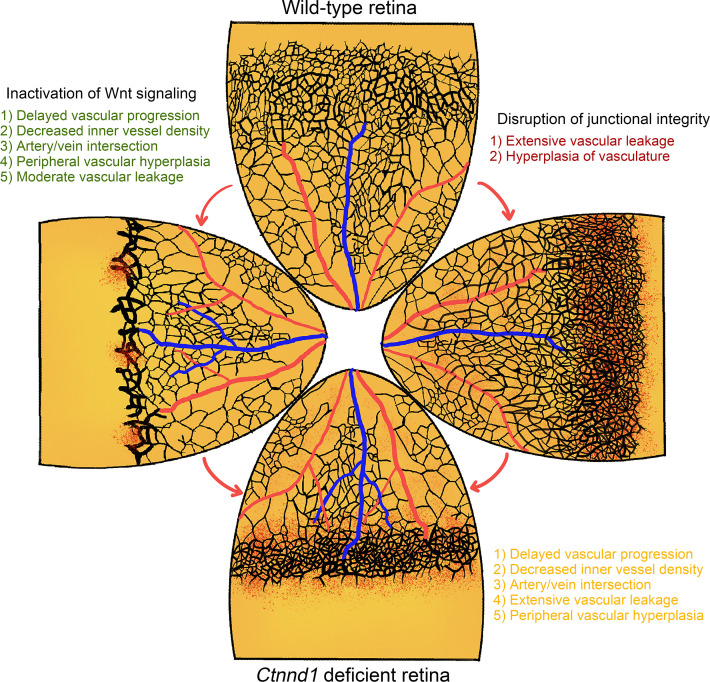- Record: found
- Abstract: found
- Article: found
CTNND1 variants cause familial exudative vitreoretinopathy through the Wnt/cadherin axis

Read this article at
Abstract
Familial exudative vitreoretinopathy (FEVR) is a hereditary disorder that can cause vision loss. CTNND1 encodes a cellular adhesion protein p120-catenin (p120), which is essential for vascularization with unclear function in postnatal physiological angiogenesis. Here, we applied whole-exome sequencing to 140 probands of FEVR families and identified 3 candidate variants in the human CTNND1 gene. We performed inducible deletion of Ctnnd1 in the postnatal mouse endothelial cells (ECs) and observed typical phenotypes of FEVR with reactive gliosis. Using unbiased proteomics analysis combined with experimental approaches, we conclude that p120 is critical for the integrity of adherens junctions (AJs) and that p120 activates Wnt signaling activity by protecting β-catenin from glycogen synthase kinase 3 beta–ubiqutin–guided (Gsk3β-ubiquitin–guided) degradation. Treatment of CTNND1-depleted human retinal microvascular ECs with Gsk3β inhibitors LiCl or CHIR-99021 enhanced cell proliferation. Moreover, LiCl treatment increased vessel density in Ctnnd1-deficient mouse retinas. Variants in CTNND1 caused FEVR by compromising the expression of AJs and Wnt signaling activity. Genetic interactions between p120 and β-catenin or α-catenin revealed by double-heterozygous deletion in mice showed that p120 regulates vascular development through the Wnt/cadherin axis. In conclusion, variants in CTNND1 can cause FEVR through the Wnt/cadherin axis.
Abstract

Related collections
Most cited references73
- Record: found
- Abstract: found
- Article: not found
Wnt/β-Catenin Signaling, Disease, and Emerging Therapeutic Modalities.

- Record: found
- Abstract: found
- Article: found
A Computational Tool for Quantitative Analysis of Vascular Networks
- Record: found
- Abstract: found
- Article: not found